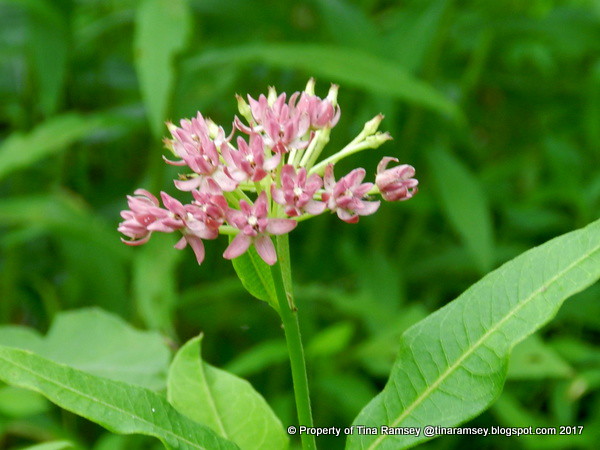
Good morning all! Things are really popping in Tiger Way Gardens and since I've been so busy taking pictures of butterflies with my cellphone I thought it was high time I posted some on here. If you'd like to see videos of the 'sea of butterflies' here in Tiger Way Gardens please do visit my professional page called Coach in the Garden!
Above is an unidentified milkweed. I am leaning towards Swamp Milkweed (Asclepias incarnata). If anyone knows for sure please tell me. It is growing wild at the bottom of Wildflower Hill.
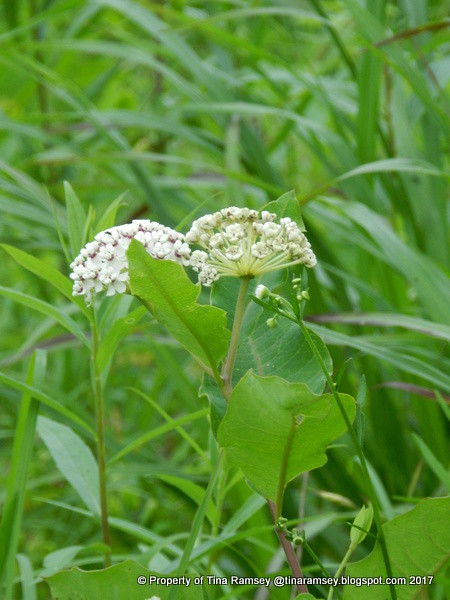
This milkweed is also growing wild on Wildflower Hill but I know for sure it is Redring milkweed, aka Asclepias variegata.

The above picture is wildgrown native Butterflyweed, aka Asclepias tuberosa. It was growing in this spot along with three other large butterflyweed plants. I have worked this particular garden around these milkweed plants even tho a couple of them were damaged due to the electrical ditch being dug in this location. For more information on this butterflyweed here check out this post.
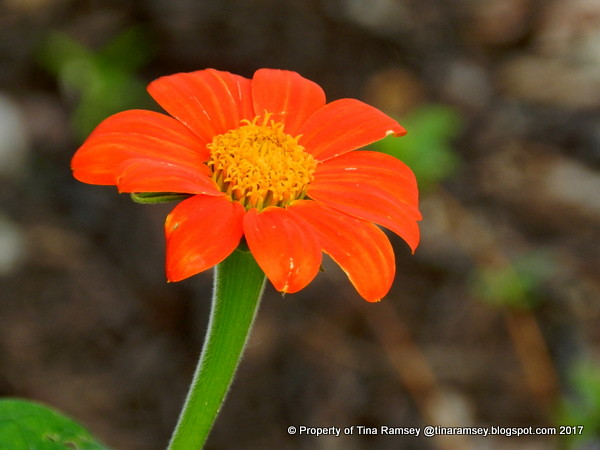
Mexican sunflowers, aka Tithonia rotundifolia are butterfly magnets. I started seeds for this flower and many of its siblings in the greenhouse in March. They are already blooming and it is exciting to see the colors.
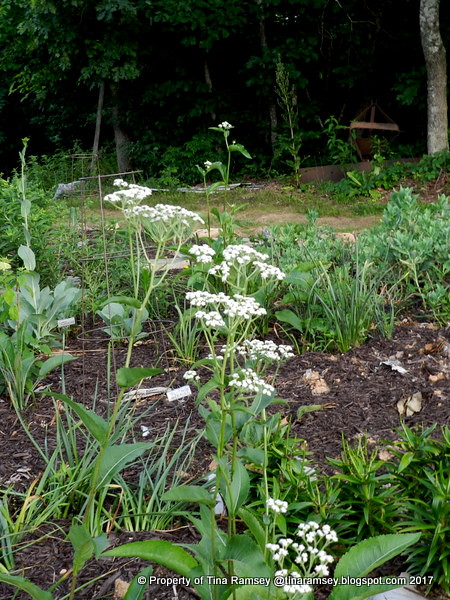
I believe this beautiful plant to be Euphorbia corollata. I purchased a start from a Tennessee native plant nursery several years ago. I then moved that plant out here to the farm and it put it in my Prairie Garden. It has really taken off and is quite hardy. I have no problems dividing it and moving it around in the garden. I absolutely love it as it seems to bloom all season long and the foliage always looks good. I am surprised it is not grown more in perennial gardens.

Coreopsis 'Sienna Sunset' and 'Moonbeam' yarrow make a perfect match not far from the Euphorbia corollata.
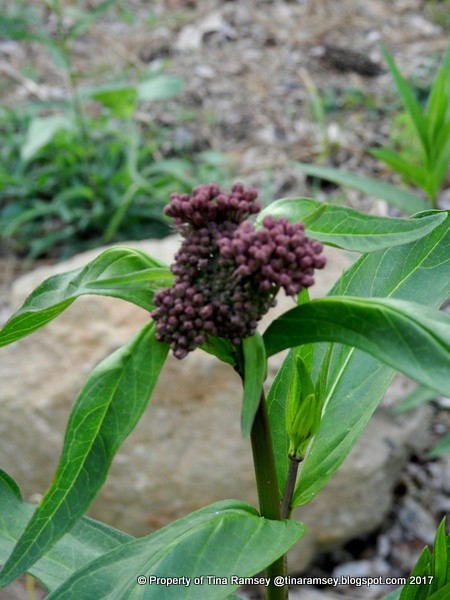
This is for sure Swamp Milkweed (Asclepias incarnata). I purchased a couple of flats of both swamp milkweed and whorled milkweed last summer from Monarch Watch. It took a really long time to plant all of the plants (I think it was 100 of each) but plant them I did! All of the swamp milkweed went into cultivated gardens because I read where it does not compete well with weeds. The whorled milkweed was spread about the property in both cultivated gardens and Wildflower Hill.

Above is butterflyweed but it was planted by me. I purchased a few pots at a nursery two years ago and stuck the plants in a butterfly garden right next to my front sidewalk. My goodness these few plants see SO much activity that I have to stop and watch the action daily. Eastern Tiger swallowtails, Gray hairstreaks, Zebra swallowtails, Great Spangled Frittilaries, Monarchs, bees, and many other pollinators love this grouping of butterflyweed. A tip for you if you garden for pollinators. Make 'islands' in your gardens for the pollinators. Don't just scatter one plant here and one plant there but group a couple of plants in a fairly close grouping then put another group of the same plant in another location. These islands ensure the most amount of pollinators can be accommodated at any given time in the garden.

Larkspur self seeds itself yearly in this outer edge of the vegetable garden. Eastern Tiger swallowtails love these flowers. Once they fade away they will be replaced by self seeding zinnias for late summer butterflies.
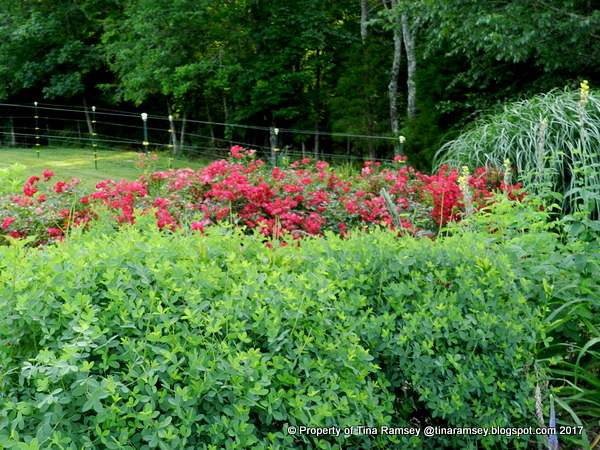
The red garden is looking decidedly red with Red Drift roses taking center stage. Baptisia is in the foreground and it has already gone by but still looks good.
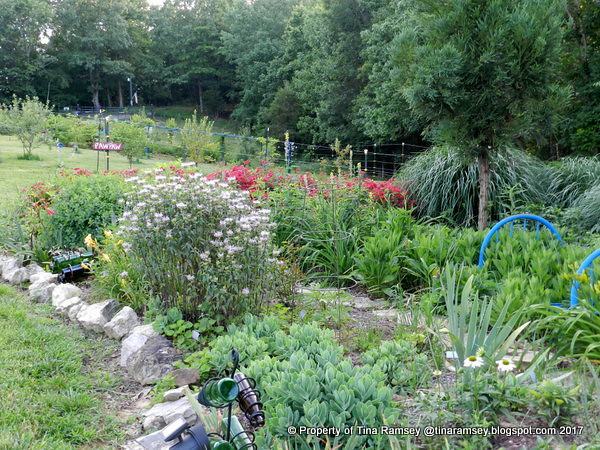
A longer shot with native bee balm (Monarda fistula) blooming. It planted itself in this location and since SO many butterflies and bees and even moths partake of its goodness I let it stay in this garden. Wildflower Hill is full of the native bee balm but this cultivated one blooms earlier than the wild grown ones.
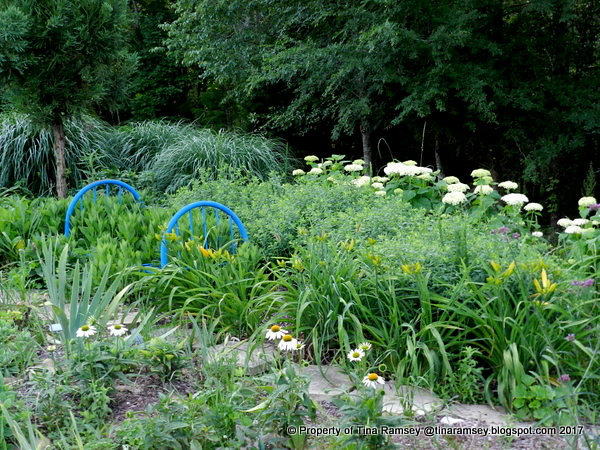
The daylilies can hardly contain their excitement. They are all LOADED with buds. Have you ever eaten a daylily bud? Yum! The fat ones are great fresh from the garden. Rudbeckia, Annabelle hydrangeas, miscanthus, and 'White Swan' coneflowers are also all visible here in the Red Garden.
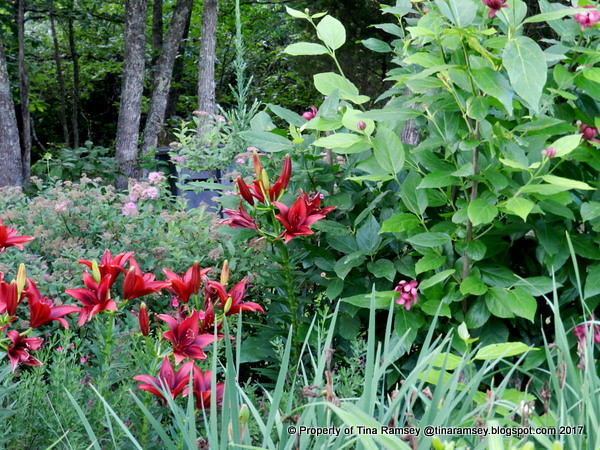
Lilies, spiraea and 'Aphrodite' sweetshrub in the Red Garden. Butterflies are all over this garden!
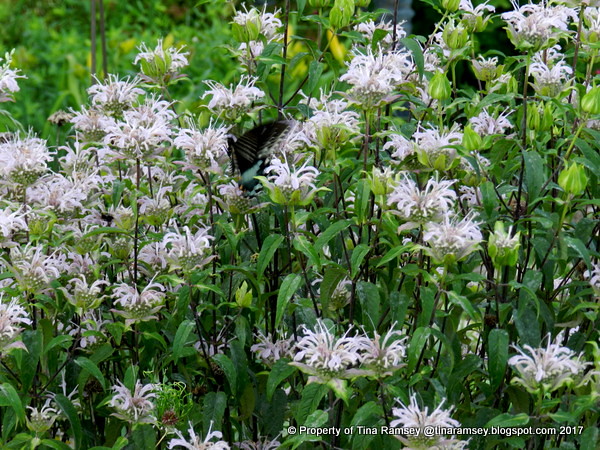
A close up of the native bee balm with a nectaring butterfly.
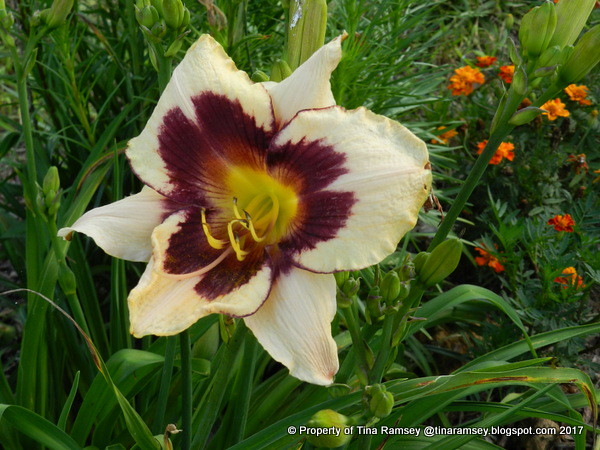
A few daylilies with marigolds. Butterflies do like both of these plants.

Sweetbay magnolia is located in the Butterfly Garden and while it is not visited as much for its nectar as it is for being a host plant, it is amazing in the garden and the blooms smell great!
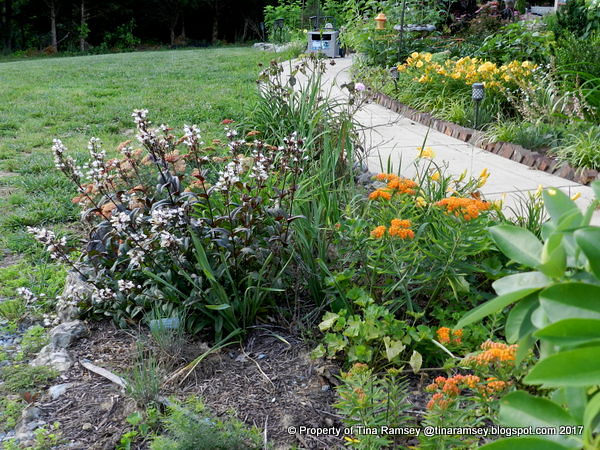
One last look at the Butterfly Garden. I've heard many say butteflies are not in abundance but I find that is not true here in northern Middle Tennessee. I do live in a rural area and have planted lots of plants specifically for the butterflies so that surely brings them in. It's funny, not all plants are attractive to butterflies and other pollinators like honeybees. I now have six honeybee hives and have harvested nearly 60 pounds of honey from my bees. I note what plants they visit and adore. My philosophy for gardening for the pollinators is to provide a smorgasbord of yummy plants they may like. Diversity is the key and also creating those pollinator islands for all of the good insects and birds you may find....
in the garden....
Ticks and chiggers need not apply!
Your garden looks so lush. I am envious of all the room you have to plant the amounts of pollinator friendly plants. Such excitement.
ReplyDeleteI love it.
ReplyDeleteWow, what wonderful plants for your pollinators, when we plant them, they will come visit our gardens. Thanks for sharing ~ FlowerLady
ReplyDeleteIt's so great to see the bees and butterflies enjoy a garden. Thanks for feeding them.
ReplyDelete